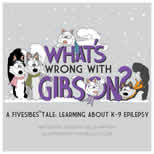ASSESSING THYROID FUNCTION
W. Jean Dodds. DVM
The following article is used by permission of the author.
Downloadable PDF of full article.
A variety of thyroid function tests is offered by Antech Diagnostics either alone or as part of a comprehensive total health screening panel. Currently, our recommended approach for new patients is to include a complete thyroid antibody profile as part of the comprehensive health screening panel. Please ask about Antech’s new profiles that include CBC, serum superchemistry panel, and thyroid antibody profile [Antech Profile 7200, and 7300 (freeT4 by ED)]. Add-On tests include cTSH and/or TgAA.
Antech's thyroid hormone assays use radioisotopic methods, except for the thyroglobulin autoantibody (TgAA), which is measured by ELISA.
All reported reference ranges refer to those of adult animals.
Diagnosis of Thyroid Disease
Total T4
Measuring serum T4 alone is considered to be imperfect for diagnosis of thyroid disease, because it can: overdiagnose hypothyroidism; underdiagnose hyperthyroidism; fail to detect early stages of the compensatory disease; and cannot identify the presence of thyroiditis. This test is greatly influenced (lowered) by the presence of nonthyroidal illness (NTI) and specific drug therapy (e.g. corticosteroids, anticonvulsants, potentiated sulfonamides, some nonsteroidal anti-inflammatory agents).
Free (Unbound) T4
Serum free T4 represents the small (<0.1%) biologically active fraction of the total T4, and is therefore less likely to be influenced by NTI.
As a single test, accurate measurement of free T4 has been shown to have the highest sensitivity, specificity, and accuracy for diagnosing canine hypothyroidism.
The techniques used in veterinary medicine for assaying free T4 include: direct radioimmunoassay (RIA) determination after equilibrium dialysis (ED), considered by many to be the "gold standard"; one-step or two-step solid phase or liquid-phase analog RIAs; enzyme-linked immunosorbent assay (ELISA); and chemiluminescence. The advantages and disadvantages of current free T4 assays have been vigorously debated. Methods used routinely at Antech Diagnostics include a one-step RIA method and the dialysed [ED] RIA method.
Total T3
Measuring serum T3 alone is also not recommended, although it can be useful as part of a thyroid profile or health screening panel. For example, if levels of total and free T4, and total T3 are all low, the patient most likely has a NTI rather than hypothyroidism. If total T3 levels are high or very high in a dog not receiving thyroid supplement, the patient most likely has a circulating T3 autoantibody (the most common type), which spuriously raises the T3 level.
Free (Unbound) T3
Like the free T4, free T3 represents the biologically active fraction of total T3. Levels are usually normal in hypothyroid dogs without concurrent NTI, may be elevated slightly in dogs with increased tissue metabolic demands, are low in dogs with NTI, and are typically spuriously high or very high in dogs with T3 autoantibodies.
Endogenous Canine TSH (cTSH)
In primary hypothyroidism, as serum free T4 levels fall, pituitary output of thyroid stimulating hormone (TSH) rises in a regulatory, compensatory response. In human medicine, highly sensitive and accurate endogenous TSH assays are available which make diagnostic testing straightforward, as virtually all hypothyroid patients have elevated TSH levels. However, in veterinary medicine, canine endogenous TSH (cTSH) is poorly predictive of primary hypothyroidism in dogs (70%) versus > 95% in humans, and can give 20-40% discordant results [both false positive and false negative]. This finding has been verified by several published studies. The reason is unclear, but it appears that some dogs have a slightly different bioform of TSH that reacts poorly or unpredictably in the assay. Thus, the cTSH assay by itself is not recommended for diagnosing canine hypothyroidism, and spuriously low or high cTSH levels can be seen in some hypothyroid or euthyroid dogs, respectively.
Canine Thyroglobulin Autoantibodies (TgAA)
An estimated 80% of cases of canine hypothyroidism result from heritable autoimmune (lymphocytic) thyroiditis. Many popular breeds are at increased risk for this disorder, with English Setters being the breed exhibiting the highest prevalence of thyroiditis today (>40% of those tested).
The presence of elevated TgAA levels confirms thyroiditis, promotes early recognition of the disorder, and facilitates genetic counseling. Low-grade false positive results can occur if the dog has been vaccinated recently, especially with rabies vaccine; retesting is recommended in 90 days. False negative results can occur in up to 8% of T3AA and/or T4AA confirmed positive thyroiditis cases, presumably because not all epitopes of TgAA are recognized by the assay reagent. Dogs on thyroid supplement should be off this medication for at least 90 days to obtain accurate TgAA results. Please note that reporting units for the TgAA normal reference range have changed recently from <200% to <20%. All equivocal or positive results are repeated with a confirmatory test to correct for non-specific binding (NSB TgAA); the normal reference range for this confirmatory test is <10%.
T3 and/or T4 Autoantibodies (T3AA/T4AA)
Whereas most cases of autoimmune thyroiditis (Ëś92%) have elevated TgAA in their serum, only about 20% have elevated serum T3 and/or T4 AA. Thus, the presence of elevated T3 and/or T4 AA supports a diagnosis of auto-immune thyroiditis but underestimates its prevalence, as negative (non-elevated) serum T3 and/or T4 AA levels do not rule out thyroiditis. On the other hand, positive results support the presence of thyroiditis, even if the TgAA level is normal. Most circulating antibodies are against T3 (~70%), some affect both T3 and T4 (Ëś25%), and only a few affect T4 alone (Ëś5%). When these autoantibodies are present, measurement of T4 and T3 levels will be spuriously high.
OFA Thyroid Registry Profile
The OFA Thyroid Registry Profile is offered by Antech Diagnostics (New York branch), and the required OFA forms and instructions for testing must be used. The profile includes: freeT4 ED, cTSH, and TgAA. This profile may fail to identify up to 8% of dogs with autoimmune thyroid disease that are T3AA and/or T4AA positive but TgAA negative.
Accordingly, to avoid missing this subset of cases, a preferred approach is to measure the complete thyroid antibody profile which includes the OFA Registry Profile plus T4, T3, freeT3, T3AA, and T4AA. This approach is especially important for evaluating breeding stock and family background.
Post-Thyroxine Therapeutic Monitoring
Follow up testing is beneficial to ensure adequacy of the prescribed dosage as well as client compliance. For dogs receiving thyroid supplementation, measuring the total T4 and free T4 is recommended at the peak sampling time of 4-6 hours post-BID therapy. [Alternatively, a trough level or both peak and trough levels also can be run.] Both tests are needed because measuring T4 alone could lead to an inappropriate dose increase if a sub-optimal T4 result is due to concomitant NTI or use of certain drugs listed above. For dogs with thyroiditis, however, post-thyroxine monitoring should include the complete thyroid antibody profile to determine whether thyroid autoantibodies are waning as anticipated.
Monitoring patients on thyroxine is recommended at least once a year and ideally twice a year. The pharmacokinetics, metabolism and excretion of the drug can vary from individual-to-individual or over time in the same individual, resulting in an absorption rate that ranges from 12-55% (mean 37%). Further, on the day of testing, the medication should be given directly by mouth and not with a meal, as calcium binds to thyroxine and can retard absorption of the drug.
Please note that the reported reference ranges for these tests reflect basal and not peak therapeutic levels, and that peak levels for dogs receiving levothyroxine should be in the upper 1/3 to 1/3 above the upper limits of the basal ranges for good metabolic control.
Page last update: 05/30/2011










